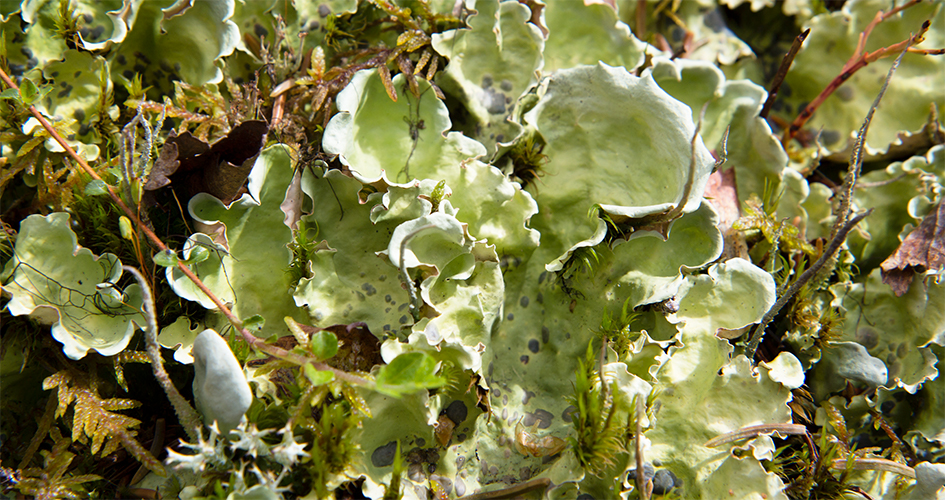 Foto: Laponiatjuottjudus
Foto: Laponiatjuottjudus Plant life
Stora Sjöfallet/Stuor Muorkke unites an alpine environment with an imposing old primeval pine forest.
It lies right next to the road on the way into the national park. Silvery erect dead trees and pines approaching 500 years of age stand against the backdrop of the mountains.
Varied vegetation
Otherwise the national park has mostly birch forest and open alpine heaths. The terrain often is strewn with boulders. If you walk in the alpine heaths, you can see how the vegetation varies on hills and in depressions, depending on how long the snow cover stays in place during the summer. There is everything here from areas exposed to wind with trailing azalea and diapensia to snow-covered ground with dwarf willow and moss bell heather.
Utility plants
In the Dievssávággi valley and on the southern slopes towards Áhkkájávvre reservoir, the forest is lush. There are exceptional quantities of plants here that the Sami have used not only for food, but also as medicine. Båsskå/garden angelica is one of the most common utility plants. In the Sami language it is called “fáddno” during its first year of growth, when it’s not good to eat. The stalk of the mature plant can be peeled and eaten as is or roasted over a fire. Dried garden angelica was good to have in one’s mouth when it was cold or if one had a cough. Marsh Labrador tea was used as a mosquito repellent, among other things.
Share with your friends
Share this page with your friends on Facebook, X (formerly Twitter), Google+ and e-mail.





